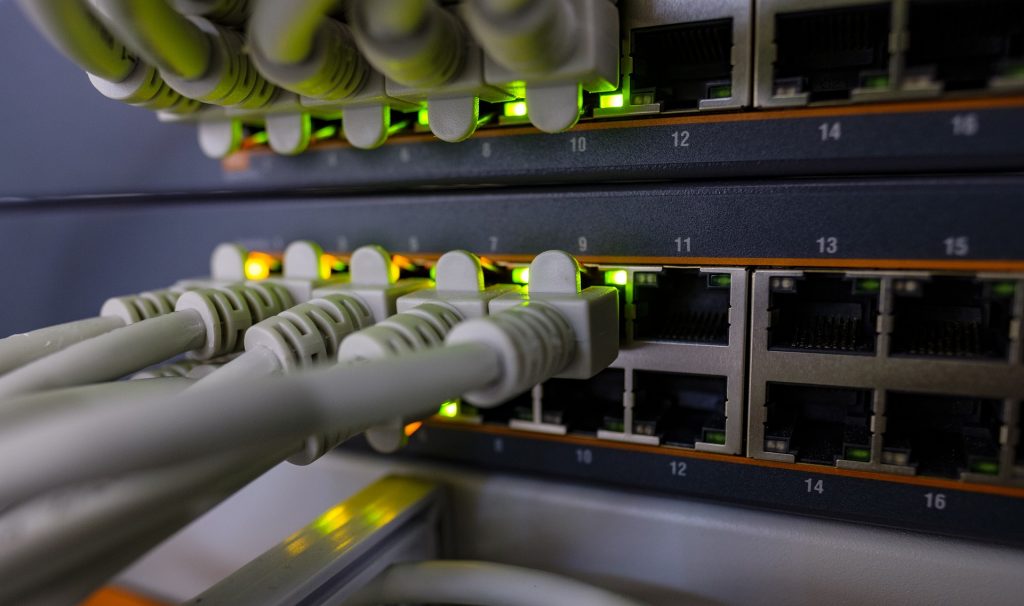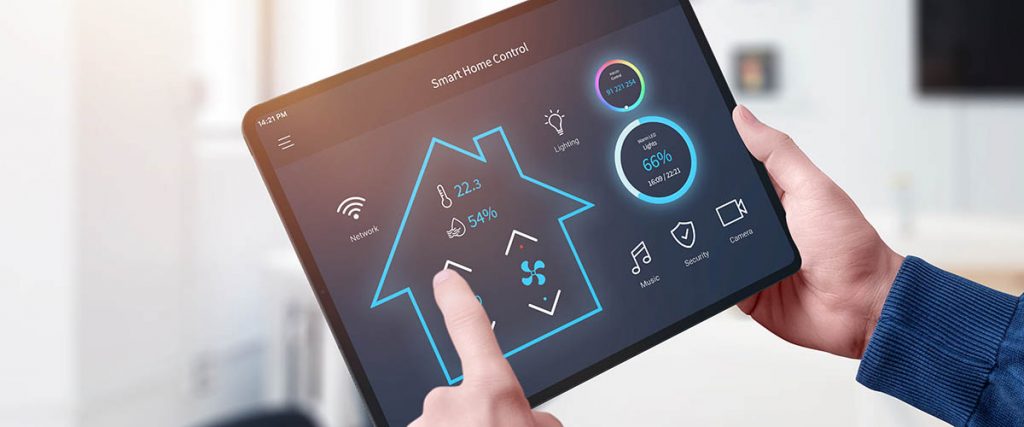Advancing technology has revolutionized our homes, and modern bus systems have become indispensable components in the fields of electrics, gas, heating, water and smart homes. What are these bus systems – and what do they have to do with energy efficiency and comfort?
Digitization and automation offer us a multitude of opportunities to shape our own lives individually. Intelligent buildings are able to tailor comfort and safety to our respective life phases, and we can thereby make our own personal contribution to climate protection: After all, climate protection targets and CO2 reduction targets can only be achieved if energy efficiency – and here in buildings in particular – is further increased.
Innovative technologies not only enable more efficient home control and monitoring of electric, gas and water-based systems, but also form the basis for the emerging field of smart homes. These so-called electrical bus systems are the backbone of modern home installations, making it possible to centrally control lighting, heating, air conditioning and other electrical devices. They also allow individual control of housing for the elderly and people with impairments.
A central control
The networking and integration of various systems open up new possibilities for customizing and controlling our living space. The basic concept of bus systems is to network devices via a common data line. These devices can be sensors that collect information, actuators that perform actions, or control units that orchestrate the entire process. Communication takes place via defined addressing systems, whereby actions and information are forwarded to the correct recipients.
Some systems, such as KNX, rely on a so-called line topology, where all devices are connected in series. Other systems, such as ZigBee, use a mesh topology where devices are networked together and can relay information. In addition, there are wired and radio-controlled bus systems.
Controlling devices wirelessly – radio bus systems
Radio-controlled systems such as ZigBee, Z-Wave and WLAN (IEEE 802.11 standards) offer the possibility of controlling devices wirelessly via a local smart home control center. In contrast to conventional bus systems, the actuators in radio bus systems are often located directly at the consumers, such as roller shutter motors or electric skylights. In addition, each “brick” extends the wireless network, eliminating the need for additional amplifiers to transmit signals to remote areas of the home. This allows subsequent installation of switches, dimmers and sensors on the wall or flush-mounted. Radio-controlled solutions are thus ideal for rental apartments, as they can be easily taken along (depending on the product), or they are cheaper than solutions that provide for wired lines.

A classic example of wired bus systems is the KNX system, a global standard for home and building control. KNX has been used for decades to connect devices and enables communication between sensors, actuators and control units. This allows residents to create lighting scenarios, regulate heating and even remotely control shutters. The advantage: KNX can be used both wired and radio-controlled for home control and allows the combination of products from different manufacturers. This is called system-neutral, which means that if one provider should no longer exist on the market, there are enough other systems that can step in.
In the KNX world, input devices are called sensors and include push buttons, touch-sensitive screens, heat or weather sensors, doorbells and window switches. These sensors are connected to each other via the bus and to the control technology, which is often installed centrally at the fuse box in the basement. The actuators in a KNX system are responsible for controlling all electrically operated equipment in the house. With the central KNX server, processes can be automated and configured so that switches in the house can be connected to various switchable devices.
Increase safety with intelligent sensors
Bus systems also play a crucial role in monitoring and safety in gas and water systems. By integrating intelligent sensors, potential leaks or problems can be detected at an early stage. For example, the Zigbee protocol enables wireless communication between sensors, actuators and control units to monitor water consumption and detect leaks.
Modern heating systems use bus systems to increase energy efficiency. These systems enable communication between heating systems, thermostats and sensors to adjust heating output to individual needs and reduce energy consumption.

Where to go?
The concept of the smart building has gained a great deal of importance in recent years, and bus systems play a central role in this. These systems will still make a very important contribution to solving the most important challenges of our time: They will help us to manage energy better, and they will increase our comfort so that we can stay in our own homes for as long as possible.
Currently, however, there are many isolated solutions on the market, but no real breakthrough or “killer application”. Companies have worked out solutions for themselves and along existing product portfolios, but have often not developed them along the end customer. Likewise, there is too little communication about what is actually already possible. Because the end customer often has banal ideas, and the industry is looking for that one killer application. Where to go – this is a question that not only end consumers ask themselves.






